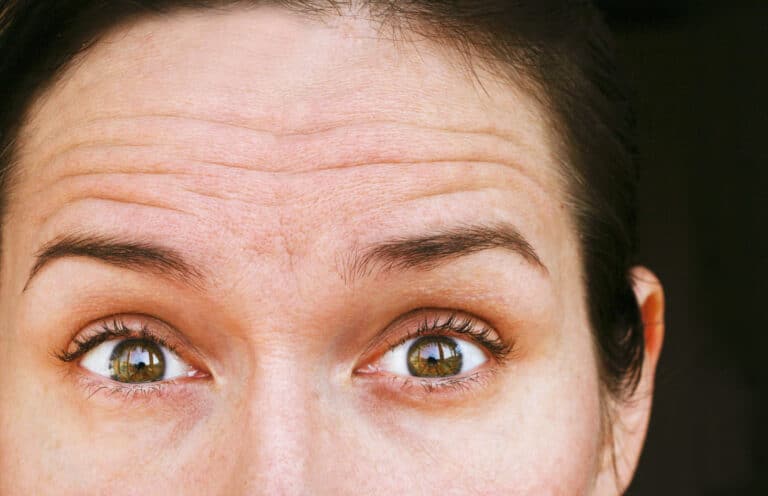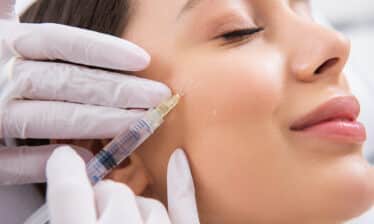Forehead wrinkles are one of the most obvious signs of aging for many people. Some people feel like the vertical creases make them look angry or serious all the time. A surgical brow lift is a definitive treatment for forehead wrinkles, but surgery is a serious procedure that comes with risks such as infection or disappointing results.
There are a number of less invasive treatments to minimize the appearance of forehead wrinkles. Whether you opt for prevention or injections, you can have a smoother brow.
Why Fillers Won’t Work for Forehead Wrinkles
Dermal fillers, which are injectable serums to plump and smooth out the appearance of facial wrinkles, may seem like a perfect option for forehead wrinkles. But fillers are not indicated for lines on the forehead. The FDA has not approved fillers for forehead lines or other dynamic wrinkles.1
Forehead wrinkles are formed due to the movements of muscles below the skin. As you raise and lower your brow, your skin crinkles and smooths back out. Over time, skin loses volume and elasticity and doesn’t return to a totally smooth resting state.
Fillers work best for adding volume under the skin in areas such as the nasolabial folds, lips, and cheeks. They aren’t as effective at reducing the appearance of dynamic wrinkles caused by underlying muscle movement. Fillers for forehead wrinkles won’t give you the results you want.
Injectable Neuromodulators for Forehead Wrinkles
One of the top treatments for forehead wrinkles is injectable neuromodulators such as Botox or Dysport.2 These treatments contain botulinum toxin, a neuromodulator that temporarily immobilizes muscles. When used on the forehead, it reduces movement in the forehead, smoothing the muscles beneath the surface. As a result, the skin on top of the muscles looks smoother, and some wrinkles may disappear entirely. Immobilizing the muscles prevents wrinkles from deepening as well.
Neuromodulators last for 3 to 6 months. You can refresh them as many times as you like over the years.
Other Techniques for Reducing Forehead Wrinkles
Injectables aren’t the only option for smoothing out persistent forehead wrinkles. Other options include:
- Sun Safety: Using sunscreen on your face is a simple way to protect your skin from damage and premature signs of aging. Sun damage can make skin more prone to laxness and wrinkles and increase discoloration. Being vigilant about sun safety can slow the progression of forehead wrinkles.
- Anti-Aging Skincare: Retinoids and retinol are forms of Vitamin A that are used in anti-aging skincare products.3 Retinols are available in over-the-counter creams and serums, while retinoids are typically found in prescription-strength formulas that you get from a dermatologist. Both ingredients can reduce the appearance of wrinkles and lines.
- Laser Skin Treatments: Laser skin resurfacing and laser tightening treatments are non-invasive treatments that can refresh the overall appearance of your skin. A technician passes a concentrated light over the skin, which heats up the tissue beneath the surface.4 This process triggers increased cell turnover and production of collagen. After treatment, your skin may look fuller and brighter, and wrinkles may be less visible.
If you want to learn more about treatment for forehead wrinkles, speak to an aesthetician or dermatologist. They can help you decide which treatment is right for you. Learn more about injectable treatments at My Filler Treatment.
SOURCES:
- FDA: “Dermal Fillers (Soft Tissue Fillers).“
- American Society for Dermatologic Surgery: “Neuromodulators.“
- Cleveland Clinic: “Retinol.“
- Medical News Today. “What to know about laser skin tightening.“






